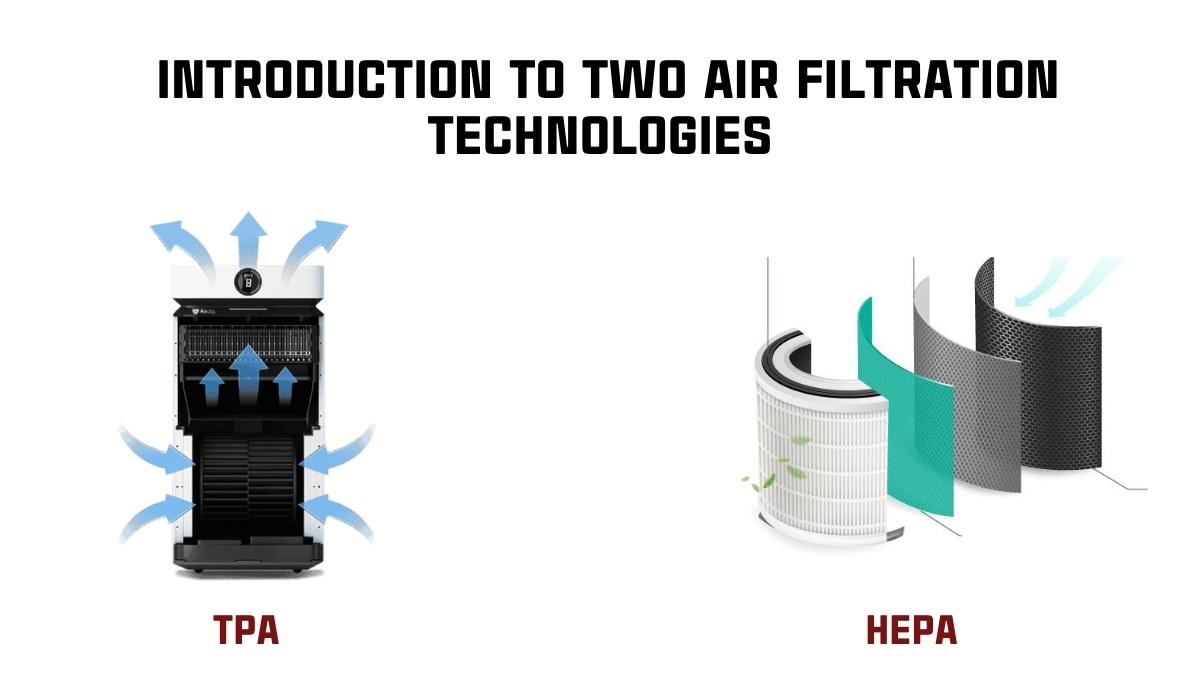Blogs
Compare TPA and HEPA technologies, which is more effective
The widespread use of traditional HEPA air filtration technology in most household air purifiers is well-known. However, Airdog air purifiers, equipped with advanced TPA (Two Pole Active) filtration technology from the United States, offer superior filtration and eradication of pollutants and pathogens, setting them apart from traditional filtration systems. What makes TPA technology superior to traditional HEPA filtration? Let’s explore the differences between these two technologies!
1. Introduction to Two Air Filtration Technologies
While both technologies serve the purpose of air filtration, air purifiers with TPA technology boast unique features such as pathogen eradication, which HEPA technology cannot achieve.

2. TPA Technology: What is it?
TPA stands for Two Pole Active. This advanced air filtration technology operates actively and uniquely worldwide. It uses high-voltage electricity to capture and destroy dust, bacteria, viruses, and even formaldehyde in the air.
- Patent and Global Reach: TPA® technology, patented exclusively from Silicon Valley, USA, provides clean air and can eliminate particles as small as 0.0146 microns. It is recognized in over 120 countries and has a loyal customer base in Vietnam, with a return rate of up to 40% by December 2023.
- Comprehensive Filtration and Eradication: Integrated into most Airdog air purifiers, TPA technology is a superior solution for filtering and eradicating harmful airborne substances. It employs an ionization field with a voltage exceeding 10,000 volts to break down pollutants and pathogens.
- Reusable Collector: The harmful particles, once broken down, are positively charged and adhere to a negatively charged collector, preventing them from being released back into the environment. This collector is washable, reusable, and highly efficient in removing 99.9% harmful microorganisms, making it an eco-friendly solution.

Due to these reasons, TPA technology offers superior features to traditional filtration technologies. Airdog is one of the first global brands to incorporate TPA technology into their innovative air purifiers.
3. Comparing TPA and HEPA Technologies
HEPA Technology: HEPA filters are made of ultra-fine glass fibers, capable of trapping numerous small particles. Air passes through a dense filter, capturing pollutants through pressure. However, HEPA filters require regular replacement, leading to decreased efficiency and potential pollutant release if not appropriately maintained.

4. Detailed Comparison: Which Technology to Choose?
Understanding the definitions of HEPA and TPA is one thing, but analyzing their pros and cons gives us a clearer perspective.
| Criteria | HEPA Technology | TPA Technology |
| Operating Principle | Filters pollutants by trapping them in a dense mesh | Utilizes four filters with distinct functions for comprehensive filtration and eradication |
| Filter Lifespan | 3-6 months, requires costly replacements | Permanent, washable, and reusable, saving costs |
| Filtration Efficiency | Filters particles down to 0.3 microns | Destroys particles as small as 0.0146 microns |
| Environmental Friendliness | No | Highly eco-friendly due to reusable filters |
| Maintenance Costs | High due to frequent filter replacements | Low, as filters do not need replacing |
5. Why Choose TPA Over HEPA?
– TPA Technology Advantages: Equipped with high-voltage wires, TPA technology effectively filters and destroys ultra-small microorganisms down to 0.0146 microns. Medical professionals and hospitals favor Airdog air purifiers utilizing TPA in over 150 countries.
– Reusable and Eco-friendly: TPA collectors, primarily metal-based, are lightweight compared to HEPA filters. These reusable and washable collectors make TPA a pioneering technology in air purification, significantly reducing environmental impact.

Given its advanced filtration capabilities, low maintenance costs, and environmental benefits, TPA technology outperforms traditional HEPA filtration. For those seeking clean, fresh air for their families, TPA air purifiers offer long-term benefits and superior performance.


